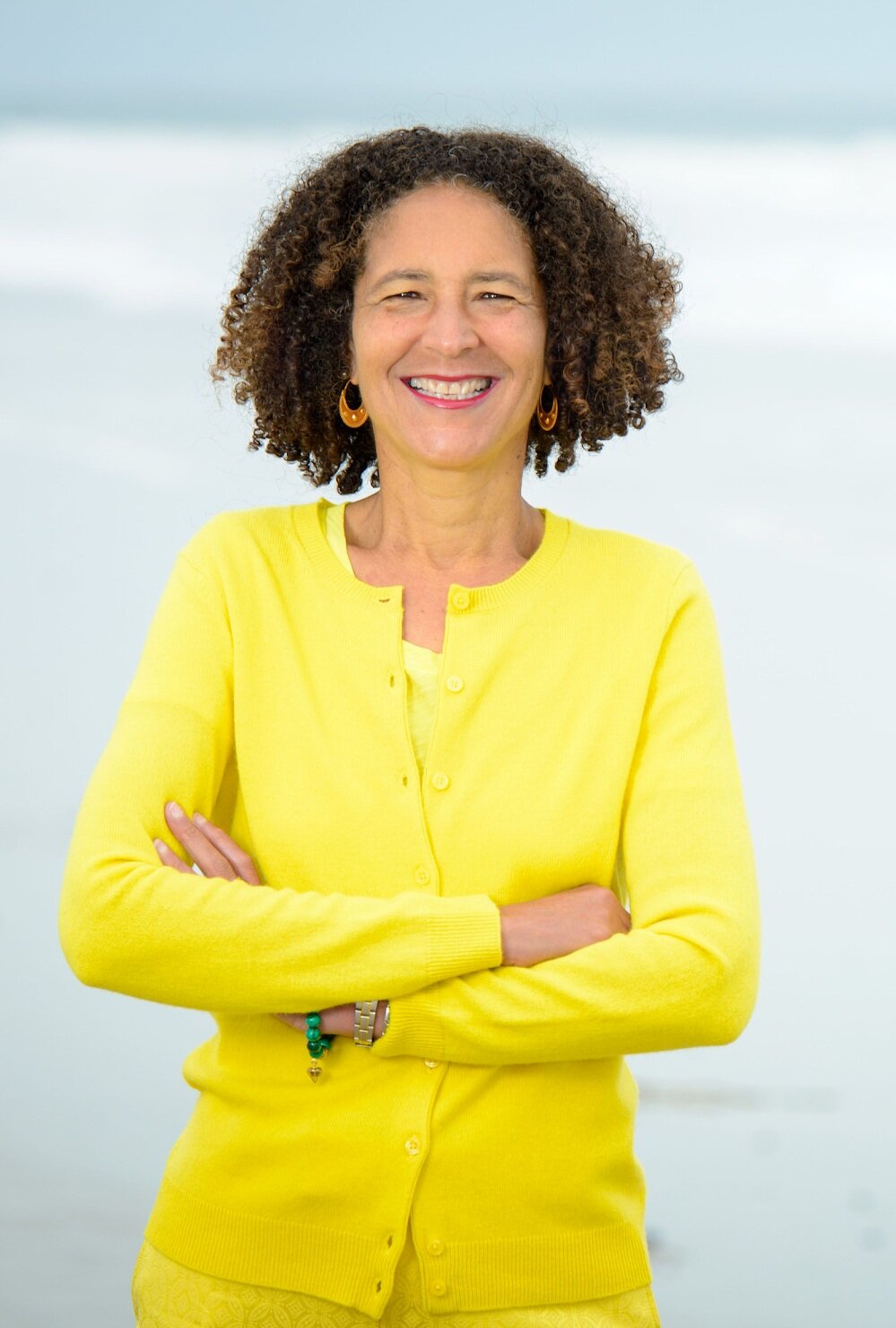By Milo Leong
In an era that is exposing institutional racism in the United States more widely than before, it has become urgent to amplify underrepresented voices and reframe American identity.
UC Santa Barbara alumna, Alison Rose Jefferson is among those at the forefront of this movement in Los Angeles.
Author, researcher and UC Santa Barbara History alumna Alison Rose Jefferson. Photo by Leroy Hamilton.
Since earning her Ph.D. in History at UC Santa Barbara in 2015, Jefferson has set out to uncover erased moments of African American history. Currently a scholar in residence at Occidental College, she has collaborated with artists, scholars, and institutions to produce educational programming, exhibits, and publications that are dedicated to sharing the African American experience with a wide audience.
One of Jefferson’s most recent projects is the Belmar History + Art project in Santa Monica. It is designed to commemorate the African American community that once thrived in the Belmar neighborhood up until the 1950s. Around then, the state used its eminent domain power for redevelopment, pushing out families and businesses to build the Santa Monica Civic Auditorium and other buildings. Set up in the newly constructed Historic Belmar Park, the project will exhibit artwork, interpretive elements, and run an educational outreach program.
In a recent interview, Jefferson discussed her research, and some of the latest news on her Belmar History + Art project.
Q: Can you talk about your work on the Belmar History + Art project and its significance?
A: The project is a civil commemorative justice project that is an educational, inspirational, and remembrance initiative. I initiated the project when I suggested to the California Coastal Commission at one of their meetings, “You should make the Santa Monica government do a project to inform people about African American history in the neighborhoods around this new park that you are about to build.”
It is the first applied history project in Santa Monica and it is on a site that in the 1950s was where African Americans and other marginalized people lived. But with redevelopment that happened in the Civic Center campus area in Santa Monica and the freeway [Interstate 10] coming through and then other urban redevelopment efforts, African Americans and other marginalized groups were pushed out of the neighborhoods closest to the beach.
I was the historian on the project and provided the underpinning intellectual content to the work that was created [history panels exhibited around the park]. The research that I did for the history panels, a lot of it, is an outgrowth of my book, Living the California Dream: African American Leisure Sites during the Jim Crow Era.
I use a lot of biographies to tell the story of the Santa Monica community in those neighborhoods from the late 18th century to the 1970s. We have different themes that we’re looking at. We’re looking at individual and family successes. We’re looking at civil rights struggles. We’re looking at migration. We’re looking at the joy of beach culture, the founding of institutions and the founding of community.
UC Santa Barbara alumna, Alison Rose Jefferson, in front of a banner for the Belmar History + Art project in Santa Barbara. Photo by Leroy Hamilton.
Q: In your research on the African American experience in California, which forgotten historical and cultural moments have you found that you want to raise awareness about the most?
A: It is that African Americans came to California just like everybody else, to take advantage of the climate and all the opportunities that were available to them at that point in time on whatever their resources were. A lot of people don’t realize that African Americans were here in Los Angeles and Santa Monica in the late 19th century and that they were buying property and that they were enjoying the fruits of what California had to offer. And most people don’t realize that there was a historic African American community that was founded in the late 1800s in Santa Monica that still exists. It’s the oldest African American settlement in the region on the coast and people don’t realize that.
Renderings of UCSB History alumna Alison Rose Jefferson’s Belmar History + Art interpretive panels exhibition being installed at the perimeter of the newly built sports field at Historic Belmar Park at the Civic Center commemorating the historical African American experience in the South Santa Monica Beach neighborhoods.
Q: What other current projects are you working on and what is next for the Belmar History + Art project?
A: I am now a scholar in residence with the Institute for the Study of Los Angeles at Occidental College. I am going to be doing a symposium with other speakers [March 20] revolving around the Belmar History + Art project. [I’ll be] talking about how it came about and what the project is and then having other guest speakers respond to the project in the context of American history and why it is important.
We’re still finishing up with the Belmar History + Art project too. There's a curriculum that has been developed for grade school. So we have 3rd, 4th, and 8th grade lessons and then for high school, we have an ethnic studies lesson and a social studies lesson, and they are revolving around the stories of different events and people who lived or worked or visited the beach area neighborhoods in Santa Monica.
Milo Leong is a third-year UC Santa Barbara student majoring in Economics. He wrote this article for his Writing Program class, Journalism for Web and Social Media.




